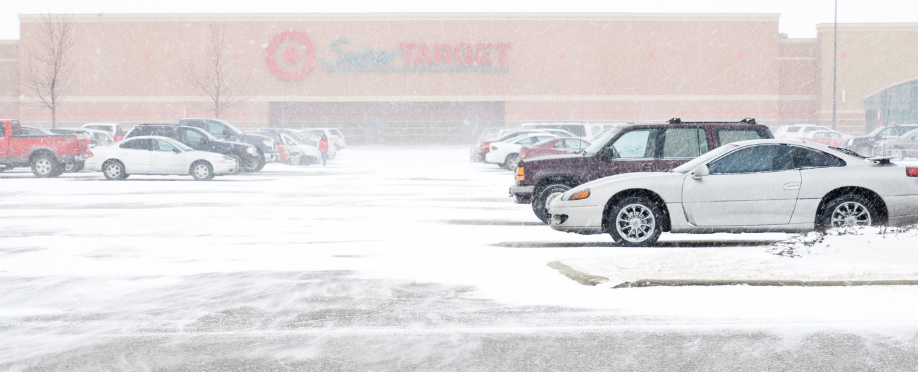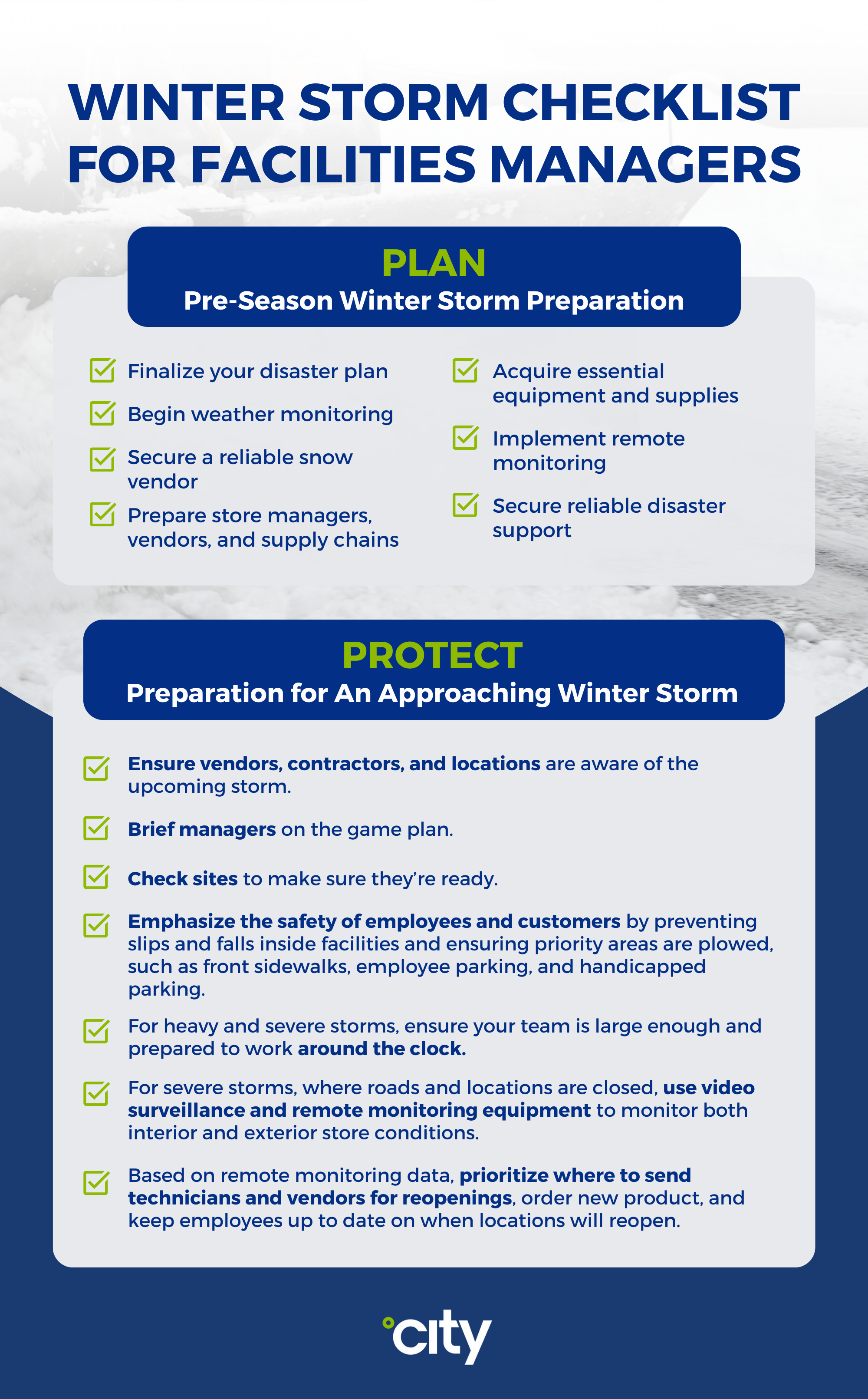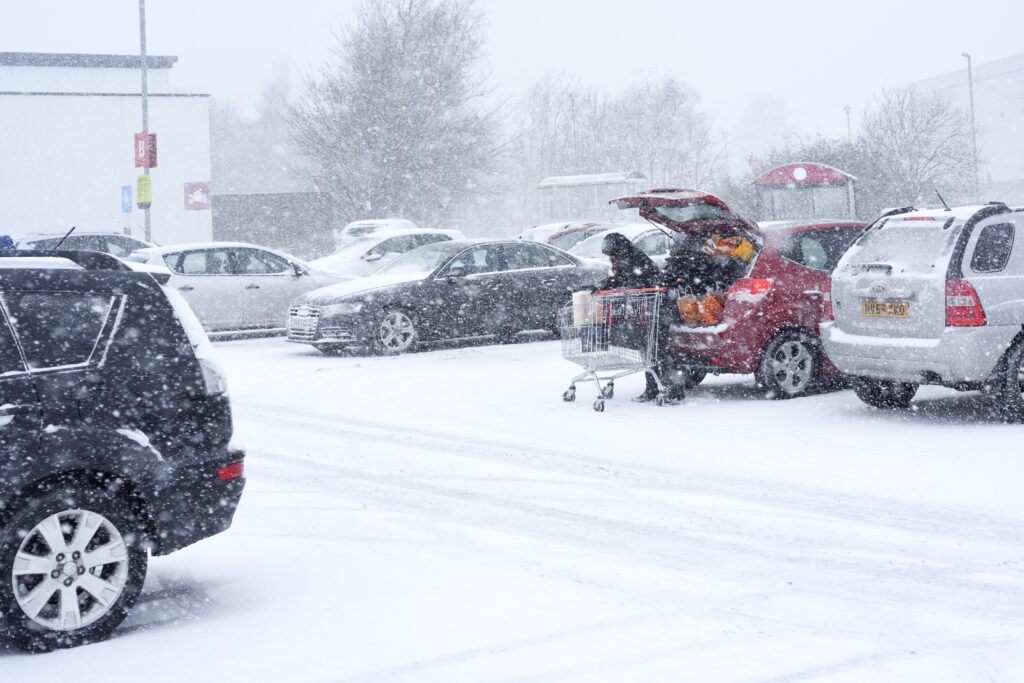
Facilities leaders, get ready. Winter has barely started, and already it looks like it will live up to predictions for an eventful season with lots of snow, record-breaking cold temperatures, a few “significant weather disturbances” across the country, and an active storm pattern throughout the eastern half of the country.
While retail facilities managers are certainly capable of a lot, they have yet to learn how to control the weather. However, through careful planning and preparation, they can nevertheless make sure their stores are ready to go in case of a storm, allowing them to stay open as long as possible for their communities.
Every winter, Brendan McGael, Snow Manager for City US, helps ensure over 700 stores — from North Carolina all the way up to the Canadian border in Eastern Ohio — are prepared for weather events of all magnitudes. Below he offers some tried-and-true best practices for facilities management leaders to implement this upcoming season.
Plan, Protect, Recover
City follows a three-step protocol of plan, protect, and recover for weather events, a model which has proven to successfully ensure business continuity for incidents of all kinds. In this article, we’ll be focusing on proactive planning and protection during the event to ensure facilities are well-prepared for winter storms.
Plan: Pre-Season Winter Storm Preparation
“Mother Nature has a tendency to sneak up on you,” Brendan says. “So it’s important to start planning well ahead of the winter season, in the fall.”
At this time of year, you’ll want to ensure your stores are 100% ready to weather any size storm by tackling the following items:
● Finalize your disaster plan
The Insurance Institute for Business & Home Safety (IBHS) recommends facilities leaders make emergency and disaster planning a priority all year long, with intensive focus during the weeks before a severe weather season begins.
● Begin weather monitoring
Ensure the appropriate personnel or your external disaster support vendor monitors conditions on a daily basis and sends regular weather reports.
● Secure a reliable snow vendor
Brendan can’t emphasize enough the importance of having a good snow vendor, and unfortunately you can’t always rely on your facilities management partner for vetting potential companies. For some helpful tips, read our Winter Checklist for Facilities Leaders.
● Prepare store managers, vendors, and supply chains
Make sure store managers, vendors, and suppliers are prepared for the upcoming season. Assign roles and clarify responsibilities. In particular, Brendan recommends only having one contact assigned to speak with your snow vendor; otherwise RFMs run the risk of miscommunication, which can result in a number of issues. Brendan adds that maintaining relationships with vendors is vital and he goes out of his way to build rapport before and during the winter season.
● Acquire essential equipment and supplies
Survey stores to determine which equipment and supplies are needed, and ensure everything is on-site and ready before the season begins. Focus in particular on generator and fuel support — power outages can extend for days and even weeks, making backup generators essential, especially for retailers with refrigeration units.
● Implement remote monitoring
Remote equipment monitoring is important for grocery and convenience stores any time of year, as they can alert facilities teams as soon as temperatures drop, allowing technicians to address issues before they result in product loss. During a winter storm disaster, these systems can help facilities leaders prioritize where to deploy resources for support.
● Secure reliable disaster support
During weather emergencies, when resources are in high demand, facilities that rely on multiple vendors are less likely to get timely support. This is where having in-house resources or an integrated facilities management partner that employs its own team of technicians can come in handy. When vetting an FM partner, ask for details about its disaster recovery experience and make sure your contract includes disaster preparation and recovery support.
Protect: How to Prepare for a Winter Storm
The “Protect” stage of City’s three-step approach kicks in when a storm is threatening and it’s time to prepare for impact. “In this stage, communication is key,” says Brendan. “At City, we coordinate with snow vendors, general contractors, and fueling contractors to make sure they’re ready to assist.”
At City, we coordinate with snow vendors, general contractors, and fueling contractors to make sure they’re ready to assist.Brendan McGael, Snow Manager at City US
In the days leading up to a storm, the preparations facilities management leaders make will depend on the level of severity of the anticipated event. At City, Brendan says, winter storms are categorized in three levels, detailed below.
1. Green (Moderate)
“At this stage, snow is coming but it should be moderate and manageable,” says Brendan. “It’s not expected to be massively widespread.”
RFMs will want to ensure vendors and stores are aware of the upcoming storm, brief store managers on the game plan, and check sites to make sure they’re ready. The safety of employees and customers will be paramount. Emphasis should be placed on reducing slips and falls within the store and ensuring priority areas are plowed, such as front sidewalks, employee parking, and handicapped parking. Thanks to pre-season planning, each store and vendors will already have a process in place.
2. Amber (Heavy)
“In the Amber stage, there’s a lot of snow coming for an extended period, usually a couple of days. Tackling the storm will be tricky and require some maneuvering.” Typically, a lot more people will be required to manage the situation and they’ll need to work around the clock.
In handling an Amber versus a Green storm, Brendan says, the biggest differentiator is that you have to be a lot more vigilant and communicative. “Whether it’s by phone, email, in person, or all of the above, you need to be in contact with everyone — your stores as well as your vendors — to ensure they know what’s coming and they’re prepared for it.”
3. Red (Emergency)
In the Red stage, the storm is at a level where roads and stores are closed. “You’re staying home,” Brendan says. “Nobody’s going anywhere.”
This is where remote monitoring is key. Video surveillance and remote monitoring equipment can be used to monitor both interior and exterior store conditions, from snow buildup to refrigeration loss. This allows RFMs to make fully informed decisions and prioritize where to send technicians and vendors to help a store get ready to reopen, get new product on the way if needed, and keep employees up to date on when stores will reopen.

Winter Storm Support from City
At City, we’re dedicated to helping our partners increase efficiency and cut facilities costs, in addition to being prepared and ready to recover from any type of disaster.


 2016: City US is established in North America, in partnership with Southeastern Grocers (SEG), servicing over 750 supermarkets across 7 southern states.
2016: City US is established in North America, in partnership with Southeastern Grocers (SEG), servicing over 750 supermarkets across 7 southern states. 1985: Willie and Susan Haughey establish City Refrigeration Holdings (UK) Ltd in Glasgow, UK.
1985: Willie and Susan Haughey establish City Refrigeration Holdings (UK) Ltd in Glasgow, UK. 2009: City Australia launches in Melbourne, in partnership with Coles, servicing over 700 supermarkets across the country.
2009: City Australia launches in Melbourne, in partnership with Coles, servicing over 700 supermarkets across the country. 2015: City Asia launches in Kuala Lumpur, Malaysia, in partnership with Dairy Farm, servicing over 205 supermarkets across the region.
2015: City Asia launches in Kuala Lumpur, Malaysia, in partnership with Dairy Farm, servicing over 205 supermarkets across the region.